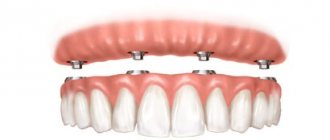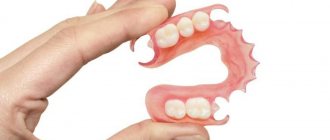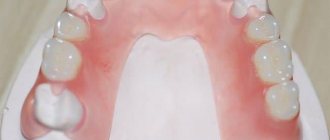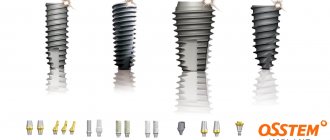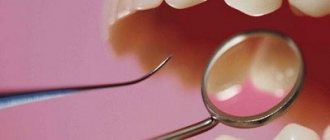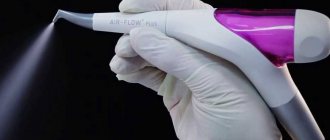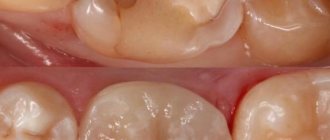Thanks to modern methods in dentistry, tooth loss is not a death sentence for a beautiful smile. Prosthetics on a beam allows you to restore the dentition in the case of the absence of several units in a row or the entire jaw is edentulous.
Bar prosthetics is considered one of the most reliable types of smile restoration. The design is designed in such a way that a base is attached to several implants (from 2 to 2). During courses, dentists and implantologists undergo detailed training in all stages of the process of installing a prosthesis on a beam on the lower and upper jaws.
The design is designed in such a way that a base is attached to several implants (from 2 to 2). During courses, dentists and implantologists undergo detailed training in all stages of the process of installing a prosthesis on a beam on the lower and upper jaws.
The design of the bar prosthesis creates an even load on all installed implants, so the patient does not experience discomfort in the oral cavity. The beam is securely held on the implants using fasteners. The prosthesis is conditionally removable; it is removed when it is necessary to clean it, or in case of replacement.
Beam prosthetic systems: design features
Beam fixation of dentures makes it possible to achieve strong fixation of the orthodontic structure in the oral cavity, and in addition, it contributes to the correct distribution of the load from the installed prosthesis on the bone tissue. A metal beam is used as a fastening element, connecting the implanted implants to each other, and having specialized recesses for installing the prosthesis.
The prosthesis and the beam are connected to each other using locks. Bar prosthetics are conditionally removable, which means that you cannot remove the prosthesis yourself. Only a doctor can remove the structure from the oral cavity, and this is usually done for high-quality professional hygienic cleaning of the prosthetic product, which needs to be done from time to time.
Indications and contraindications for bar prosthetics
Bar prosthetics are advisable for the following clinical cases:
Multiple or complete absence of dental units in the rows;
Inability to use classic removable or fixed dentures;
Presence of contraindications to classical implantation methods;
Bar prosthetics are used for periodontal pathologies that lead to loosening and loss of teeth.
Bar prosthetics has not only indications, but also contraindications. It is impossible to install dentures with a beam type of fixation in the following conditions:
In case of severe atrophy of bone tissue in the area of beam prosthetics on implants;
In the presence of active inflammatory processes in the oral cavity, caries, and other dental diseases;
With diagnosed bruxism;
If the patient has autoimmune diseases or low blood clotting rates.
Bar prosthetics are not performed during pregnancy, breastfeeding, or while taking certain medications. The possibility of performing bar dental prosthetics is determined by the doctor after examining the patient and conducting a series of diagnostic measures.
How are implants installed?
First, the patient undergoes tests and undergoes x-ray diagnostics to exclude contraindications and draw up a treatment plan. The installation of implants is carried out using anesthesia - local (injection in the jaw) or intravenous. First, the gum flap is peeled off, then holes are drilled for the implants and fixed in the bone. After this (in most cases), the gum is sutured, and the patient goes home and recovers from the operation. Prosthetics will be performed in 3-6 months.
How is the operation to install dental implants performed?
If the bone tissue is dense enough, then prosthetics are possible within 3-7 days after the surgical stage. But, let us note once again that specifically for the beam type of prosthetics, immediate load is very rare.
Pros and cons of bar prosthetics
The beam prosthetics technique has its advantages and disadvantages, which should definitely be taken into account before making the final choice in favor of this technique for restoring lost teeth. The advantages of beam prosthetics include:
The most correct distribution of the load, which ensures the durability of the results of prosthetics, extends the service life of the installed prosthesis, and eliminates the processes of bone tissue atrophy;
Bar prosthetics are applicable for complete edentia;
Bar dentures are fixed in the oral cavity as reliably as possible: the product cannot fall out when eating or actively talking;
Bar prostheses do not require specific complex care and allow
eat solid foods. Bar prosthetics has a lower cost compared to classical methods of dental implantation;
If necessary, the prosthesis will be easy to restore: only the product itself is removed.
There are also disadvantages to beam prosthetics. First of all, the treatment period is quite long; a permanent prosthesis can be installed in place only after the implants have completely healed. Installation of a bar prosthesis also requires a sufficient amount of bone tissue in the area of prosthetics, and services for bar prosthetics are more expensive compared to removable prosthetics.
What are the disadvantages?
To discover the negative aspects of removable beam prostheses, you need to compare them with fixed orthopedic structures on implants. Thus, the following disadvantages become visible:
- shorter service life of the prosthetic structure and implants: higher risk of loosening of the implants, breakage of the product - after all, it has to be removed and put on using physical effort (which is not always calculated correctly),
- lower aesthetics of the restored smile: artificial teeth are made only from plastic, and on fixed structures they are made from ceramic composite, metal-plastic, zirconium dioxide,
- you cannot use the patient’s old prosthesis with which he walked before: with modern implantation protocols with fixed prosthetics this is possible - however, the structure must be in good condition,
- more complex hygiene and the need for regular removals,
- immediate prosthetics are used very rarely: immediate installation of an orthopedic structure on implants is possible only if the jaw bone is sufficiently dense. If it is soft and porous, then you will have to wait for the implants to engraft – it occurs in 3-6 months. During this period, the patient must be content with a conventional “puller” with fixation on the gums.
Preparation for beam prosthetics and main stages of treatment
Preparation for beam prosthetics involves carrying out a number of diagnostic measures. The beam prosthesis is placed on implants, and therefore general tests are required, a panoramic photograph of the jaws is taken, which allows a qualitative assessment of the condition of the tissues of the oral cavity. Detailed diagnostics are required to exclude possible contraindications to beam prosthetics and eliminate the risks of possible complications after implantation. Next, the treatment is divided into several successive stages.
Implantation
Before implantation, the type of implants that will be used as a support for the beam prosthesis is selected, and the area of their implantation is also determined. An operation is performed to install titanium screws - artificial roots are implanted and then plugs are placed on them. The number of implants will depend on the characteristics of the clinical case. Typically, from 4 to 8 implants are used.
A bar prosthesis cannot be installed with less than three screws - otherwise it will not be possible to achieve a stable position of the structure in the oral cavity. With immediate implantation, a temporary prosthesis can be immediately installed on implanted implants. A permanent bar prosthesis is placed only after osseointegration of the implanted titanium screws.
Fixation of permanent prosthesis
A permanent beam prosthesis is made using impressions of the patient's jaw. The structure will be fixed to the implants using a beam that fastens titanium screws together and has recesses for installing the prosthesis. After the permanent beam prosthesis is made in the laboratory, the patient comes to try it on. If the fitting reveals inaccuracies in the design, the patient will feel severe discomfort - the product is corrected. If everything is fine, the doctor will install the prosthesis in place and fasten it to the beam by snapping specialized miniature locks.
The treatment ends with a detailed consultation on the rules for caring for the beam prosthesis. Compliance with the doctor’s recommendations will ensure a long useful life of the beam prosthesis, and will also eliminate the risks of negative side reactions and complications.
Comprehensive smile restoration using modern technologies
Today, in dentistry and dental implantology in particular, one-stage methods for restoring teeth with immediate loading have become widespread. Currently, this is the optimal method for complex smile restoration when it comes to complete or almost complete absence of teeth.
It is here that the patient has dentures that look perfect, do not fall off, and do not cause any discomfort. Below are the most popular concepts for different cases of edentia (lack of teeth).
Trefoil (all-on-3) – for the lower jaw
The orthopedic system is attached to 3 implants installed in the front part of the jaw straight or at a slight angle. This is a one-step protocol that is applicable only to the lower jaw, mainly for cases where all or almost all teeth have been lost.
The artificial roots are united by a titanium beam, the special mechanism of which allows you to take into account the slightest nuances of the jaw system for the most comfortable and high-quality prosthetics.
The beam is a template element, it is created in the USA and comes complete with implants. The part adapts to the patient’s dental system and acts as a base on the basis of which a prosthetic device is further developed.
“In the case of Trefoil, a permanent prosthesis is installed. It is fixed with a screw, so that if necessary, a specialist can remove it without the risk of damage - for example, for correction or replacement. The design is lightweight, weighing less than 20 grams, which means there will be no increased load on the implants even immediately after their installation.
The part that imitates natural gums is created from new generation acrylic - a lightweight material that does not cause inconvenience to the patient and does not create a risk of displacement of the implanted implants,” comments Ivan Pavlovich Kopylov, an expert in the field of maxillofacial surgery and implantology, a doctor at the specialized dental center Smile -at-Once.
The result is aesthetic and natural. The artificial gum hides the bar and the tops of the titanium roots, so your smile looks natural. Well, the prosthesis, due to its reliable fixation, of course, does not fly off - neither on the lower nor on the upper jaw.
All-on-4 concept from Nobel
The protocol was developed and patented by Nobel Biocare, which is currently one of the leading implant manufacturers in the world.
The technology involves the implantation of two implants in the front and one more on the sides at an angle of up to 45º. A complete functional denture is attached to only 4 artificial roots, allowing you to immediately solve the problem in the upper or lower jaw.
Inclined installation in the distal sections increases the contact area of the implants with living bone tissue, and therefore increases primary stability. The technique allows you to avoid building up the jawbone if it is slightly atrophied.
If the quality characteristics of the bone tissue do not allow fixing the prosthesis and we are talking about the upper jaw, you can use zygomatic rods on the sides - these are elongated models that are implanted into the zygomatic bone of the skull, protected from destruction and inflammation.
As part of prosthetics on 4 implants, two different types of orthopedic structures are used:
- First, a temporary solution is fixed - an adaptation product (preferably with a metal base to stabilize installed implants), acrylic gums and plastic crowns. Such a system can be replaced after 4-6 months or a maximum of 3 years,
- After this, a permanent structure is fixed, again with a metal base (it can be developed either in the laboratory at the clinic or created in the Nobel laboratory using NobelProcera technology). The service life of a permanent prosthesis made of high-quality materials is more than 15-20 years.
“I would like to express my deep gratitude to the doctors of your clinic! I came here with a big problem - I had almost no teeth left in my upper jaw, and the removable false teeth were rubbing terribly, and generally causing a lot of inconvenience. Here I was offered to remove several remaining decayed teeth, install 4 implants and immediately put a prosthesis on them. I agreed and didn’t regret it at all! Already on the 3rd day I had a new beautiful smile. The procedure went quickly, without pain or complications. Once again, thank you very much to everyone who worked with me!”
Daria V.D., 52 years old, review on the website of one of the capital’s dental clinics
Read more about the protocol in a separate article on our website.
All-on-6 protocol with an increased number of implants
In essence, this is an expanded concept of the previous all-on-4 protocol, only in this case the orthopedic device is fixed on 6 artificial roots: 2 in front and 2 on the sides. The technique is suitable for cases of more pronounced atrophic changes in bone tissue.
In case of emergency jawbone loss, it is possible to install zygomatic implants in the distal parts. In any case, all-on-6 is another opportunity to avoid bone grafting, which not only prolongs treatment, but also makes it much more expensive.
The implanted rods are additionally splinted with a metal or fiberglass frame located inside the prosthesis. Crowns can be plastic or ceramic composite.
The former are cheaper, but there is an option to use a new generation material - acrylic with diamond chips. It improves aesthetic characteristics and is also characterized by increased strength.
Service life is up to three years. The solution with crowns made of ceramic composite is more expensive, its service life is 15 years or more. In both cases, acrylic gum is present. And the dentures are attached very securely, which means they do not fly off either during conversation or while eating.
Pro Arch by Straumann
The protocol was developed by Straumann. The Pro Arch technique is a kind of analogue of the all-on-4 technology, previously developed and patented by Nobel. We are talking about complete prosthetics on 4 implants: 2 rods are fixed in front in a straight position and another one on the sides.
The technique also applies to immediate-load lintels and involves almost instant restoration of the smile using a prosthesis installed in a screw manner.
On a note! The company also has a protocol called Pro Arch TL. The orthopedic device is fixed on six artificial roots, which are implanted vertically, but in the lateral sections slightly shortened models are used, intended for atrophied areas of the bone .
- according to information provided on the official website of the developer company: nobelbiocare.com
This concept provides an option in which a removable structure, which was previously used by the patient, is installed on the implanted root substitutes. This is not the best solution, because in this case there is no metal base, which is why the patient will have to observe strict dietary restrictions and give up solid foods for at least six months.
The new prosthesis is fixed with a screw method on multi-unit abutments - they allow you to align the position of the orthopedic system in relation to the tops of the installed implants. However, there is no point in removing such a prosthesis for the patient himself.
Rules for the care of beam prostheses and the service life of products
Bar prostheses do not require complex and specific care. It is definitely worthwhile to carry out daily cleaning of the product: artificial teeth are brushed twice a day, for three minutes, using a paste, brush, and rinse in the procedure. Professional cleaning of the product is recommended to be carried out in a clinic: the doctor will remove the prosthesis, after which it will be cleaned with a special brush and treated with an antiseptic solution. During professional cleaning, the surface of the beam element and the sides of the implanted implants are also cleaned. The average useful life of beam prostheses is about seven years. Following the dentist's recommendations and systematic and proper care will help to significantly increase the specified period. To extend the life of the beam prosthesis, it will be useful to regularly visit the dental clinic and undergo a preventive examination by a specialist.
To eliminate the risk of product breakage, you should exclude excessively hard foods from your diet (for example, nuts, candies, caramels), and stop using abrasive pastes - hard abrasive particles can scratch the surface of artificial teeth.
It will also be useful to reduce the amount of coffee and strong tea you drink. These drinks contain coloring pigments that can cause artificial teeth to change their shade. Professional cleaning of the product in dentistry will help restore the beautiful and aesthetic appearance of the prosthesis.
The cost of beam prosthetics in St. Petersburg
The price for the beam prosthetics service will depend primarily on the number of implants, as well as their brand. The cost of the service will be affected by the implantation technique, the need for preliminary therapeutic treatment, the production of a permanent prosthesis, and the number of teeth that need to be restored with beam prosthetics is also taken into account. Do you want to know the exact price of beam prosthetics? Make an appointment with the specialists of our dental clinic in St. Petersburg - “Uni Dent”! We offer our patients various prosthetic methods that allow us to successfully solve the problem of both complete and partial adentia. In their work, the clinic’s specialists use modern materials and innovative technologies and equipment, which guarantees high quality prosthetics. A beautiful smile and healthy teeth - that’s what we are ready to offer you! Come to Uni Dent!
